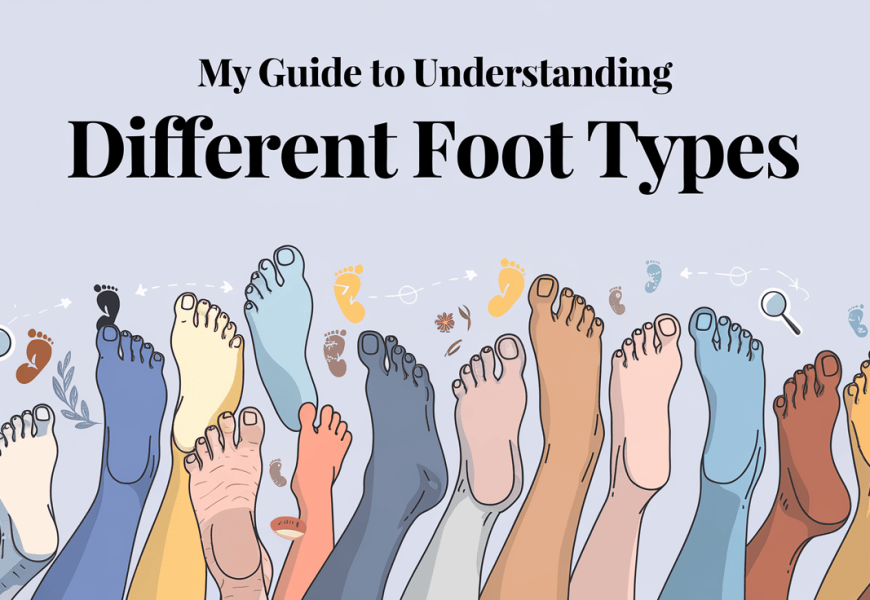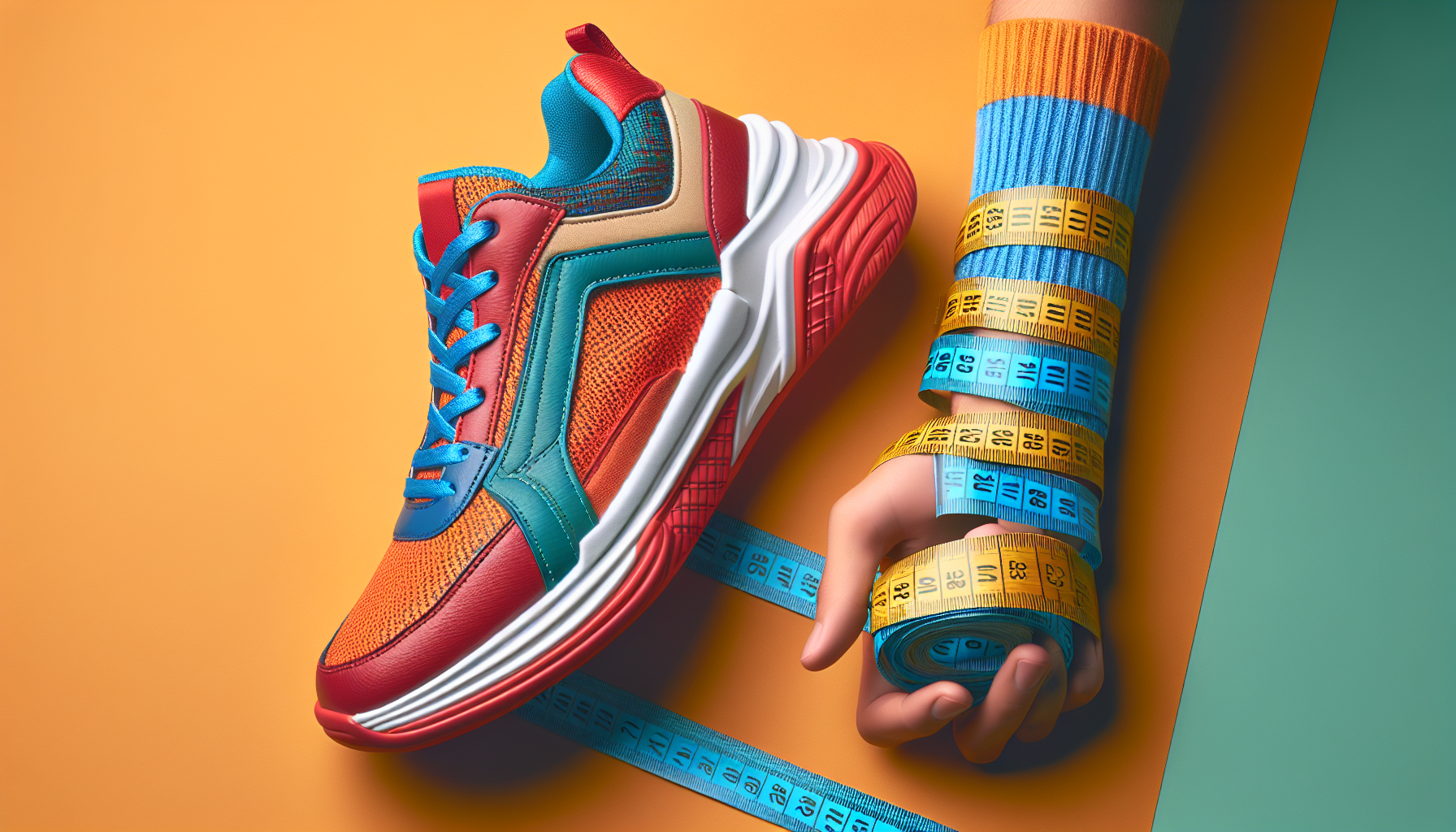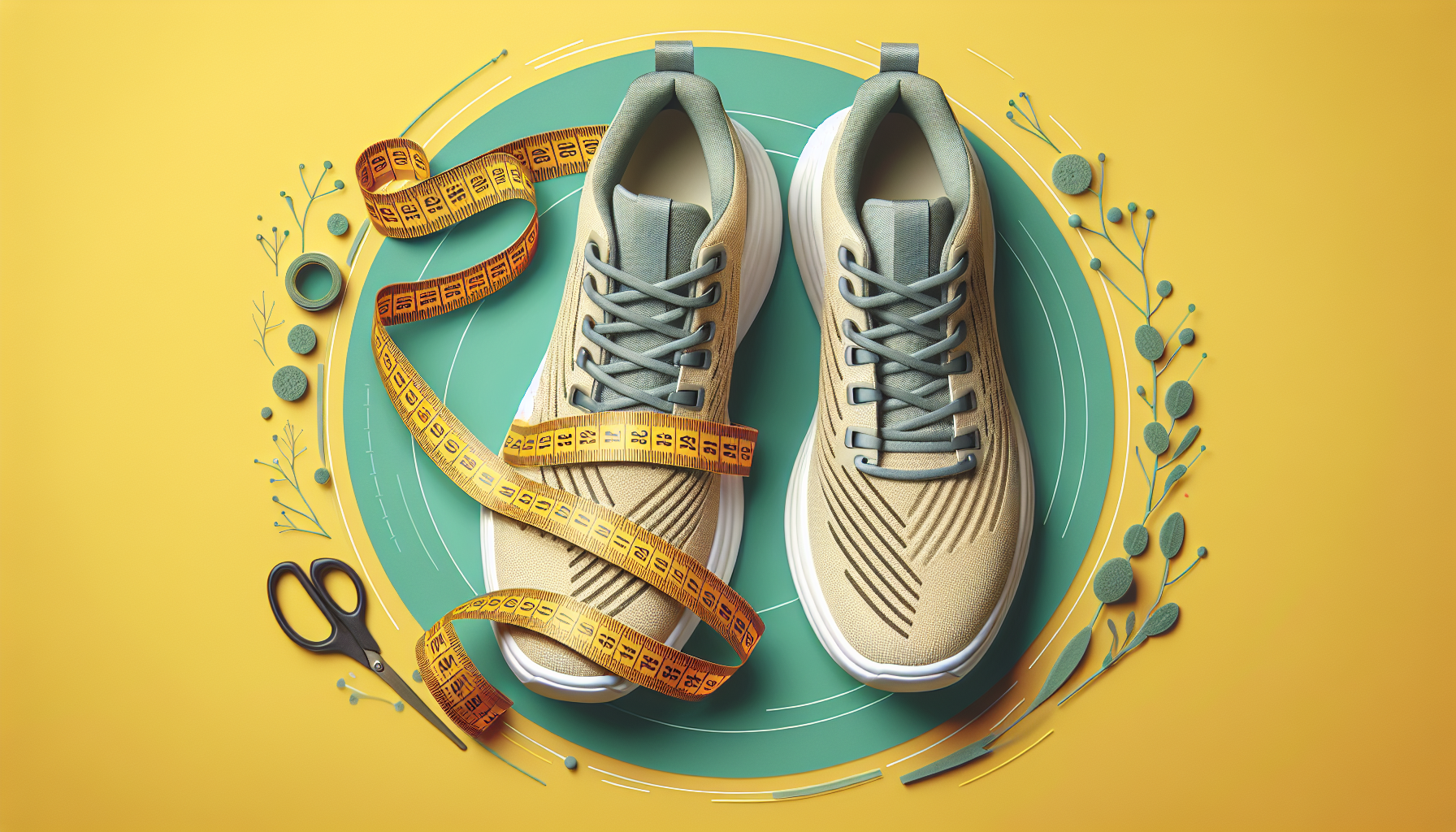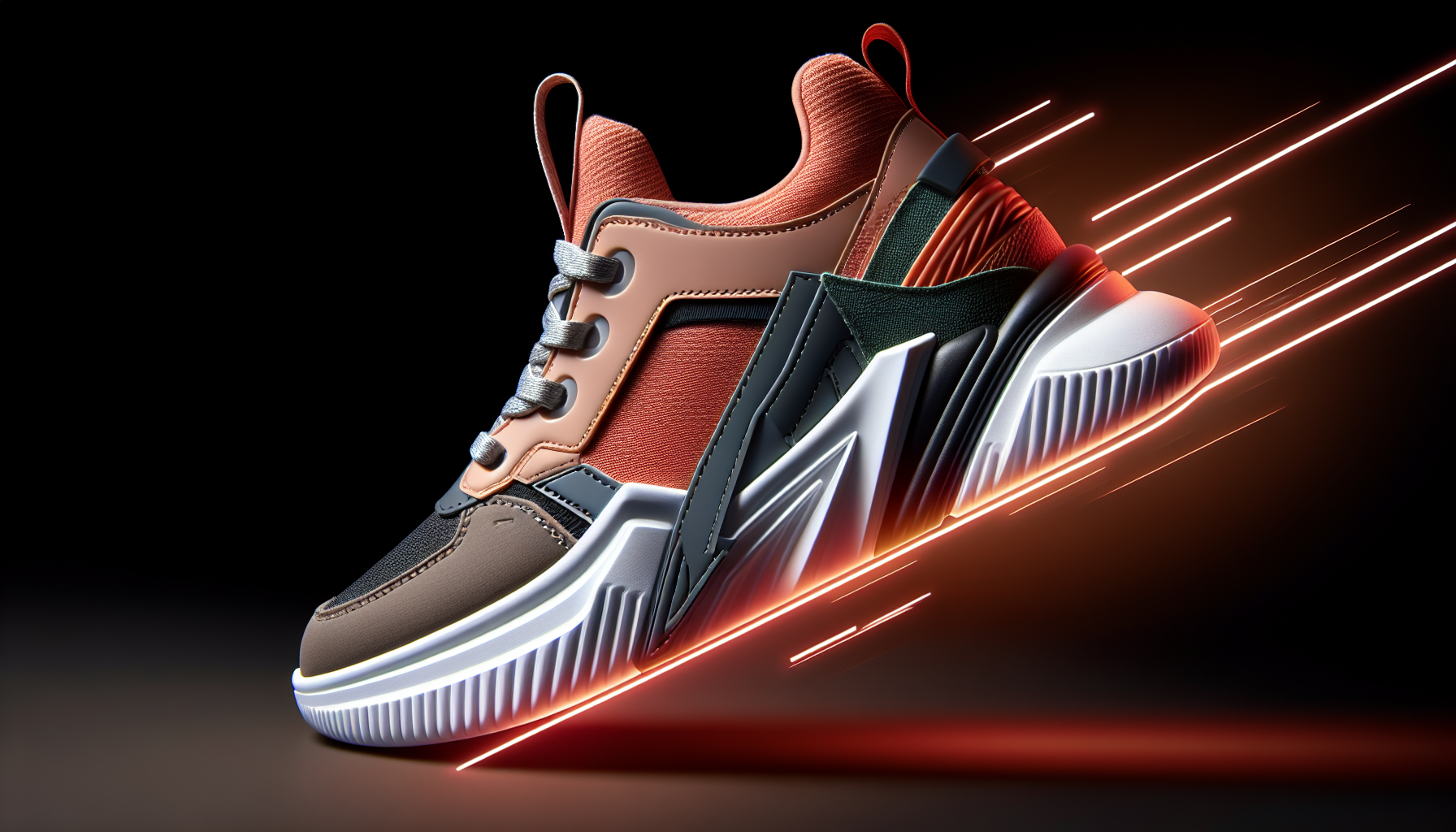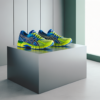Understanding Foot Arch Types
Getting a grip on what kind of arches you have is key to snagging sneakers that’ll give your feet that all-important support and comfort. Let’s take a stroll through the types: standard, high, and flat arches.
The Standard Arch
This is the everyday arch, the one most folks have. It’s kind of like the Goldilocks of arches—not too much, not too little. If you peek at your foot, you’ll see it’s about halfway filled in the middle, with a nice cozy curve creeping along the inside (Joel Foster DPM). This arch does a bang-up job of soaking up impacts and standing up to your body weight:
| Foot Arch Type | Midsection Appearance | Support Characteristics |
|---|---|---|
| Standard Arch | Halfway filled with a noticeable curve | Just right for impact absorption and support |
The High Arch
High arches are a little different. They leave a skinnier footprint with just a sliver down the middle. Sometimes all you get is the ball and heel showing up for the party, leaving a blank spot in between (Joel Foster DPM). With these arches, the curve is pretty dramatic, and there’s not much rolling going on (Sanders Podiatry). They can come with some aches due to uneven pressure giving your feet a hard time.
| Foot Arch Type | Midsection Appearance | Support Characteristics |
|---|---|---|
| High Arch | Thin or almost missing in the middle | Big inside curve, little to no roll inside |
The Flat Arch
For flat arches, imagine seeing a footprint that’s basically all there, filling out the whole middle. Kids often have this, but some grown-ups do too (Joel Foster DPM). Flat arches can throw off your balance like a wobbly chair, making your shoes wear out wrong or, even worse, cause some boo-boos (Medical News Today).
| Foot Arch Type | Midsection Appearance | Support Characteristics |
|---|---|---|
| Flat Arch | Really wide with hardly any curve | Off-kilter weight distribution, possible walking or running woes |
Figuring out your arch type is the secret sauce to picking sneakers that’ll have your feet singing. For tips on picking the perfect kicks for whatever foot conundrum you’re facing, like dealing with flat feet or plantar fasciitis, check out more of our advice.
Implications of Different Foot Arch Types
Knowing your foot’s personality, or arch type, is super helpful when hunting for the perfect sneakers. Each type—neutral, flat, and high—plays a major role in your foot health and how comfy your feet feel all day.
Neutral (Medium) Arches
Folks with neutral arches have a real sweet spot when it comes to foot support. Their arches do a bang-up job holding up their weight and keep things balanced, almost like a well-oiled machine. If you fit this profile, sneakers with firm midsoles, a kind of straightish shape, and decent heel support are your best pals. The Mayo Clinic Health System says these features are key in keeping your feet aligned and taking it easy on your joints.
| Foot Arch Type | Description | Recommended Shoe Features |
|---|---|---|
| Neutral (Medium) | Arches that naturally do their thing, keeping balance and absorbing shocks | Firm midsoles, straight to semi-curved shape, moderate heel stability |
Flat (Low) Arches
Flat, or low arches, pretty much have your whole foot hugging the ground—like it’s got a thing for it—and not much curve on the inner side. This can lead to overpronation, which is just the foot’s way of saying it likes to roll inwards too much, putting a strain on your ankles and knees. Medical News Today explains the two types: flexible (disappears when standing) and rigid (it’s always flat).
Flat feet often come with buddies like plantar fasciitis and calluses. Rocking motion control sneakers that offer solid arch support is your ticket to happier feet.
| Foot Arch Type | Description | Recommended Shoe Features |
|---|---|---|
| Flat (Low) | Flat-footed with no arch, foot rolls inward too much (overpronation) | Motion control, beefy arch support, firm midsoles |
High Arches
High arches are on the opposite end of the foot arch spectrum, standing all curved and proud on the inside. These arches stay mighty even when you’re up and about, meaning less foot surface area to spread your weight, which increases pressure on your heel and ball of the foot. That often leads to some aches and pains. According to Sanders Podiatry, high arches don’t roll inward, opening the door to issues like metatarsalgia and plantar fasciitis.
For high arches, you’ll want sneakers that can soak up shocks with cushy insoles and offer strong arch support. Shoes specially made for high arches or those designed for wide feet could make all the difference.
| Foot Arch Type | Description | Recommended Shoe Features |
|---|---|---|
| High | Elevated arch, not much foot touching the ground, increased pressure on heel and ball | Cushioning insoles, robust arch support, flexible midsoles |
Different feet, different needs. Knowing your foot type can keep you in comfort and help avoid those nasty injuries. Wondering about shoes for plantar fasciitis? Check out our guide on sneakers for plantar fasciitis for more smart tips.
Identifying Your Foot Arch Type
Before grabbing a pair of sneakers, start with figuring out your foot arch type. It’s kinda like knowing hoow your car sits on the road – it’ll go a long way in giving you comfort. Here are some simple ways to zero in on your foot shape and signs to keep an eye on.
Wet Test
The Wet Test is a pretty simple trick to figure out your foot arch type. Here’s how you can go about it:
- Dampen those soles.
- Stand on a piece o’ paper or a flat surface that’ll show off your wet foot print.
- Check out the shape that your foot leaves behind.
Analyzing That Footprint
- High Arches: If your print shows mainly the ball and heel, congrats, you’re in high arch land!
- Moderately High Arches: Notice a tiny curve between the heel and ball? You’ve probably got moderately high arches.
- Moderate Arches: Your print’s got balance, showing a reasonable arch – nothing crazy.
- Flat Arches: If you’re seeing almost the whole foot, welcome to flat arches town.
This test gives you a snapshot of your arch type, next shoe shopping trip will be a breeze.
High Arch Symptoms
High arches are like the opposite of flat ones, showing off a higher arch with minimal inward rolling. Here are signs to confirm it:
- Pain or Discomfort: Those arches can give you grief, particularly if you’re standing too long.
- Joint and Muscle Strain: A high curve means missing out on natural shock absorption, making life tough on those joints.
- Shoe Drama: Good luck finding comfy shoes that have a fair bit of support.
If you have a hard time during high-impact activities, you might need some sneakers with extra padding! Check out sneakers for plantar fasciitis if this shoe fits.
Flat Arch Symptoms
Flat as pancakes! These feet lack an arch and can give you a load of headaches:
- Lopsided Weight Distribution: Watch those shoes wear down unevenly!
- Stepping Struggles: Walking or running might feel like you’re dragging those feet, leading to extra aches.
- Big Footprint: Almost the entire foot shows up on the wet paper!
Recognize any of these dramas? It might be time to browse sneakers for flat feet for some much-needed comfort.
Getting your arch type just right helps in picking sneakers that won’t leave your feet crying. If the horizon expands beyond unique arch types, perhaps peep into the best sneakers for wide feet – your feet will thank you!
Shoe Selection Based on Foot Arch Type
Picking the right pair of sneakers isn’t just about style; it’s about feeling great and performing well. Let’s dive into some tips and tricks I use to keep my feet happy based on my foot arch type.
Shoes for Neutral Arches
For those blessed with neutral arches, like me, it’s all about balance. I look for shoes that offer a steady grip and just the right amount of heel stability. My go-to sneakers usually come with firm midsoles that have a straight to slightly curved shape. These stability trainers do wonders in supporting my feet without going overboard.
| Feature | Description |
|---|---|
| Midsole | Firm |
| Shape | Straight to a bit curved |
| Stability | Balanced rear-foot hold |
Want to know more? Check out our detailed guide on sneakers for plantar fasciitis.
Shoes for High Arches
Folks with high arches, hear me out: cushioning is your new best friend. You need shoes that soak up that extra shock because high arches aren’t the best at doing that on their own. I aim for kicks with a curved fit to follow the natural bend of my foot.
| Feature | Description |
|---|---|
| Cushioning | Super soft |
| Shape | Curved |
| Shock Absorption | Top-notch |
High arches can be a bit of a diva, so getting enough cushioning is key to avoiding any foot drama. If you need roomier options, glance at our list for best sneakers for wide feet.
Shoes for Flat Arches
If you’ve got flat arches like I do sometimes, stability and control are your jam. Keep an eye out for sneakers with a straight base and control options to keep your foot steady. These shoes often have tougher midsoles to keep everything aligned and comfy.
| Feature | Description |
|---|---|
| Shape | Straight |
| Stability | Strong |
| Motion Control | Must-have for support |
The right pair of shoes can completely change your game. If flat arches are tripping you up, our article on sneakers for flat feet could be the lifeline you need.
By using this guide, choosing sneakers based on your foot’s arch type becomes a no-brainer, paving the way for comfort, support, and stellar performance.
Running Shoe Selection for Foot Types
Feeling lost in the running shoe aisle? Picking the perfect pair isn’t just about style—it’s about keeping those feet happy and injury-free. Let’s break down how to make sure you’re stepping out in shoes that match your foot’s personality.
Motion Control Running Shoes
Flat feet got you tripping over your own toes? Motion control running shoes are your best friends. These bad boys offer all the support your none-existent arches crave. They work by holding your foot in place, preventing unwanted wobbles. Like the Mayo Clinic Health System suggests, if you have flat arches, you want a shoe that’s firm with a straight shape.
Look for these in motion control shoes:
- Stiff heel counter to keep your foot aligned
- Minimal flexibility so you don’t twist an ankle
- Strong arch support to embrace your flat feet
Want to dive deeper into which shoes play nice with flat feet? Head over here.
Stability Running Shoes
Got a wee bit of overpronation but not ready for full-on control shoes? Stability running shoes are your middle-ground heroes. These provide a sweet balance of support and wiggle room. They come with a gentler heel counter, offering a cozy ride while still keeping you steady in the middle (Run United).
Things that make stability shoes tick:
- Soft yet supporting heel
- A touch of give when twisted side-to-side
- Rigid enough in the middle
These gems offer balance, letting you enjoy the run without feeling like your feet are in jail.
Neutral Running Shoes
For those of you with neutral arches, you lucky ducks can go for neutral running shoes. Even if you’ve got a mild overpronation or you supinate, these flexible fellows let your feet run free (Run United).
What you’ll find in neutral shoes:
- No extra gizmos for arch support
- Super bendy
- Lightweight, keeping you swift and nimble
They let your feet do their thing naturally, perfect for those blessed with the neutral stride. If you’ve got some extra needs, like shoes for plantar fasciitis or wider feet, check out some options here and here.
Once you get your shoe game on point, you’ll run safer, faster, and with a bigger grin on your face. Comfort and injury prevention? Sounds like a win-win to me.
Foot Strike Patterns When Running
Figuring out how your foot taps the ground when you’re jogging can totally change the way you pick your running shoes. It’s like knowing your favorite pizza topping—it makes everything better. Let’s chat about three common ways folks’ feet hit the ground: heel, midfoot, and forefoot striking.
Heel Strikers
So, here’s the thing with heel strikers: your heel’s the first to say hi to the ground. It’s kind of what a lot of folks do without thinking. But beware, this can put some serious pressure on your heels and knees. The trick is grabbing shoes with rocking heel cushioning. It’ll keep those joints happy and injury-free. Curious about the right shoes if you’re a heel striker? Peek at our sneakers for plantar fasciitis guide.
| Feature | Why It Matters for Heel Strikers |
|---|---|
| Heel Cushioning | Super Important |
| Arch Support | Sorta Important |
| Flexibility | Not a Biggie |
Midfoot Strikers
Moving on to midfoot strikers, they hit the ground with the center of their foot. It’s like spreading the love evenly when you run. The aim here? Shoes giving equal support along the sole, letting you glide along with grace. And, don’t forget to check your arch—a stable arch is like a best friend for injury prevention. For ideas on snazzy shoes, take a gander at our best sneakers for wide feet.
| Feature | Why It Matters for Midfoot Strikers |
|---|---|
| Heel Cushioning | Kinda Important |
| Arch Support | Super Important |
| Flexibility | Sorta Important |
Forefoot Strikers
Now, forefoot strikers, you folks land on the ball of your foot. This style is a win for the heels, but heads up, more pressure hits the toes. You’ll need shoes that are flexible and have stellar cushioning up front. They help soak up impact and let your foot move how it wants. Need some tailored suggestions? Swing by our article on sneakers for flat feet.
| Feature | Why It Matters for Forefoot Strikers |
|---|---|
| Heel Cushioning | Not Too Crucial |
| Arch Support | Sorta Important |
| Flexibility | Super Important |
Figuring out your foot strike is like a cheat code for picking the best sneaks for your jogging style. Feel free to dig into our other guides for extra tips!

